|
Books Should Be Free Loyal Books Free Public Domain Audiobooks & eBook Downloads |
|
|
Books Should Be Free Loyal Books Free Public Domain Audiobooks & eBook Downloads |
|
Dramatic Works |
|---|
|
Book type:
Sort by:
View by:
|
By: Gregorio Martínez Sierra (1881-1947) | |
|---|---|
 Cradle Song
Cradle Song
"In 1911 [Martinez Sierra and his wife/co-author Maria] achieved a definitive and permanent triumph with the production of The Cradle Song.... The Cradle Song is a reminiscence of Maria's youth in Carabanchel, a town in which her father was convent doctor and where her sister took the veil, the Sister Joanna of the Cross of the play. [Martinez] has paused to probe some universal passion or emotion... in The Cradle Song, to echo the cry of the eternal mother instinct while has been stifled and denied... | |
By: Harry Clifford Fulton | |
|---|---|
 Jean Valjean; or, The Shadow of the Law
Jean Valjean; or, The Shadow of the Law
A late 19th-century stage adaptation of Victor Hugo's Les Miserables in English, The Shadow of the Law dramatizes the struggles of Hugo's legendary characters: Jean Valjean, the former convict; his relentless pursuer, Javert; Fantine, the tragic mother; her daughter Cosette; the greedy Thenardiers; the doomed revolutionaries. | |
By: Henrik Ibsen | |
|---|---|
 A Doll's House
A Doll's House
Nineteenth century attitudes towards marriage, the role of women, morality and the search for identity are brilliantly explored in Henrik Ibsen's three act play, A Doll's House. It was highly controversial and received with a sense of outrage among opinion leaders in Europe. Many thinkers like August Strindberg lashed out at Ibsen for portraying the sacred institution of marriage in such a derogatory way. A Doll's House, written in the original Danish, was first performed at the Royal Theater in Copenhagen in 1879... | |
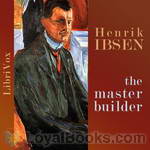 The Master Builder
The Master Builder
Henrik Ibsen's The Master Builder, first published in 1892, is about architect Halvard Solness, who despite personal tragedy (including the death of his two sons) has risen to the top of his profession. He has succeeded partly through ruthless competition and exploitation and partly through a seeming ability to force his will on others. His unhappy wife Aline mourns for their lost life, and resents his interest in various young women, including his bookkeeper Kaia Fosli. Solness disregards the ambitions of other architects, including Knut Brovik and his son Ragnar, and seeks solace in the advice of family physician and friend Dr... | |
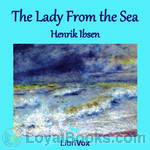 The Lady From the Sea
The Lady From the Sea
The title character in Ibsen's drama, Ellida Wangel, is married to a prosperous doctor, but feels stifled by her roles as wife and stepmother to her husband's two daughters by a previous marriage, Hilde and Bolette. Ten years earlier she had promised to marry another man - and on a sultry summer day, he comes back to her. Ellida must decide whether to choose the safety of her life with Wangel, or to yield to the siren song of the sea. | |
 Little Eyolf
Little Eyolf
Henrik Ibsen's 1894 play Little Eyolf tells the story of the Allmers family: the father, Alfred, his wife Rita, their crippled nine-year-old son Eyolf, and Alfred's sister Asta. As the play begins, Alfred has just gotten back from a trip to the mountains, and resolves to spend more time with his son, rather than on intellectual pursuits. Asta is romantically pursued by Borgheim, an engineer, while the cracks in Alfred and Rita's marriage gradually reveal themselves. The family receives a visit from the Rat-Wife, and are never the same again. | |
 The Wild Duck
The Wild Duck
The Wild Duck (1884) (original Norwegian title: Vildanden) is by many considered Ibsen's finest work, and it is certainly the most complex. It tells the story of Gregers Werle, a young man who returns to his hometown after an extended exile and is reunited with his boyhood friend Hjalmar Ekdal. Over the course of the play, the many secrets that lie behind the Ekdals' apparently happy home are revealed to Gregers, who insists on pursuing the absolute truth, or the "Summons of the Ideal". Among these truths: Gregers' father impregnated his servant Gina, then married her off to Hjalmar to legitimize the child... | |
 Rosmersholm
Rosmersholm
Rosmersholm is a play written in 1886 by Norwegian playwright Henrik Ibsen. In the estimation of many critics the piece is Ibsen’s masterwork, only equalled by The Wild Duck of 1884. As expressed by the protagonist, Rosmer, the theme of the play is social and political change, in which the traditional ruling classes relinquish their right to impose their ideals on the rest of society, but the action is entirely personal, resting on the conduct of the immoral, or amoral, “free thinking” heroine, Rebecca, who sets herself to undermine Rosmer’s religious and political beliefs because of his influential position in the community... | |
 Pillars of Society
Pillars of Society
Pillars of Society was Ibsen's first successful realist drama, first performed in 1877. Karsten Bernick is the dominant businessman in a small coastal town in Norway, with interests in shipping and shipbuilding in a long-established family firm. Now he is planning his most ambitious project yet, backing a railway which will connect the town to the main line and open a fertile valley which he has been secretly buying up. Suddenly his past explodes on him with the arrival of Lona Hessel, the woman he once jilted, and Johan Tonnesen, who left town in disgrace fifteen years earlier. | |
 John Gabriel Borkman
John Gabriel Borkman
John Gabriel Borkman is the penultimate play of the Norwegian playwright Henrik Ibsen, written in 1896. The Borkman family fortunes have been brought low by the imprisonment of John Gabriel who used his position as a bank manager to illegally speculate with his investors' money. The action of the play takes place eight years after Borkman's release when John Gabriel Borkman, Mrs. Borkman, and her twin sister Ella Rentheim battle over the future of young Erhart Borkman. Though John Gabriel Borkman... | |
 Little Eyolf (Mencken Translation)
Little Eyolf (Mencken Translation)
One of the four profound plays of Ibsen’s late period (along with “The Master Builder,” “John Gabriel Borkman,” and “When We Dead Awaken”), “Little Eyolf” tells the story of Albert Allmers, a writer who has yearned to leave behind a literary or philosophical legacy of some kind, but who finally decides to invest that yearning in the life of his little handicapped son, Eyolf. Rita Allmers loves her husband so obsessively that she hates any rival for his affection, whether it be Allmer’s literary magnum opus, Little Eyolf himself, or Albert’s strangely devoted sister Asta... | |
By: Henry Fielding (1707-1754) | |
|---|---|
 An Apology for the Life of Mrs. Shamela Andrews
An Apology for the Life of Mrs. Shamela Andrews
An Apology for the Life of Mrs. Shamela Andrews, or simply Shamela, as it is more commonly known, is a satirical novel written by Henry Fielding and first published in April 1741 under the name of Mr. Conny Keyber. Fielding never owned to writing the work, but it is widely considered to be his. It is a direct attack on the then-popular novel Pamela (November 1740) by Fielding's contemporary and rival Samuel Richardson and is composed, like Pamela, in epistolary form. Shamela is written as a shocking revelation of the true events which took place in the life of Pamela Andrews, the main heroine of Pamela... | |
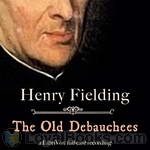 The Old Debauchees
The Old Debauchees
Young Laroon plans to marry Isabel, but Father Martin manipulates Isabel's father, Jourdain, in order to seduce Isabel. However, other characters, including both of the Laroons, try to manipulate Jourdain for their own ends; they accomplish it through disguising themselves as priests and using his guilt to convince him of what they say. As Father Martin pursues Isabel, she is clever enough to realize what is happening and plans her own trap. After catching him and exposing his lust, Father Martin is set to be punished. | |
By: Henry James (1843-1916) | |
|---|---|
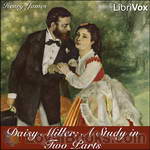 Daisy Miller: A Study in Two Parts
Daisy Miller: A Study in Two Parts
Daisy Miller is an 1878 novella by Henry James. It portrays the confused courtship of the eponymous American girl by Winterbourne, a compatriot of hers with much more sophistication. His pursuit of her is hampered by her own flirtatiousness, which is frowned upon by the other expatriates they meet in Switzerland and Italy. Her lack of understanding of the social mores of the society she so desperately wishes to enter ultimately leads to tragedy. | |
By: Henry Lawson (1867-1922) | |
|---|---|
 Dramatic Selections from Henry Lawson's Short Stories
Dramatic Selections from Henry Lawson's Short Stories
01. That Pretty Girl in the ArmyThe Salvation Army is having a hard time of things in the rough Outback town of Bourke. That is, until Sister Hannah arrives... - Summary by Son of the Exiles Coordinated by: Son of the Exiles Sister Hannah: Devorah Allen Jack Moonlight: Tomas Peter Billy Woods: Jim Locke Jake Boreham: Larry Wilson Reformed Drunkard: Wayne Cooke Bob Brothers: Algy Pug Mitchell: Alan Mapstone Donald Macdonald: Michele Eaton One-Eyed Bogan: lorda Female Testifier: Lauren-Emma Blake Blunderer: Therese Lindholm Black Testifier: Wayne Cooke Heckler: ToddHW Narrator: KHand 02... | |
By: Hesba Stretton (1832-1911) | |
|---|---|
 Jessica's First Prayer and Jessica's Mother
Jessica's First Prayer and Jessica's Mother
Jessica is a little girl who used to be an actress till she grew too big. Now she lives on the streets, mostly starving until she meets Mr. Dan'el. Mr. Dan'el gives Jessica his cast-off crusts and warmed-over coffee. Jessica follows Mr. Dan'el to a building where a bunch of people sing and then listen to a man tell them about someone named God. Jessica wants to know who God is so she sneaks into listen every Sunday, hoping she won't be found out. | |
By: Homer Greene (1853-1940) | |
|---|---|
 Blind Brother (Version 2 Dramatic Reading)
Blind Brother (Version 2 Dramatic Reading)
A story of repentance and forgiveness set in the times of the the coal mines. Follow a blind boy and his brother determined to get him cured but also determined to live up to a moral code even if that mean years of blindness for Benny. See self sacrifice and family togetherness in this classic tale. - Summary by Luke Castle Cast List Narrator: Sky AsimaruDoctor: lordaJack: Andrew JamesBennie, Judge: larryhayes7Lawyer Pleadwell: Adam BielkaTom: NavinSandy: RockyOctopusDistrict Attorney, Lawyer Summons: Alan MapstoneRandom Testifying Guy, Sheriff: Michael LMicheal Carolann, Irishman: Wayne CookeCourt Clerk, Little Fellow: ambsweet13Mother: LilyLewis G... | |
By: Hugh Lofting (1886-1947) | |
|---|---|
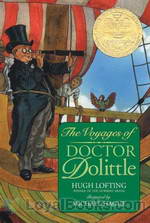 The Voyages of Doctor Dolittle
The Voyages of Doctor Dolittle
The delightfully eccentric Doctor Dolittle, rendered immortal on screen by the gifted Rex Harrison, has remained a firm favorite with generations of children ever since he made his debut in an earlier novel, The Story of Doctor Dolittle. In his second outing titledThe Voyages of Doctor Dolittle, the maverick physician takes on a new assistant, Tommy Stubbins. The story is structured as a first person account given by Tommy, who is now a very old man. The boy who was the son of the village cobbler first meets Doctor Dolittle when he takes a hurt squirrel to the doctor for treatment... | |
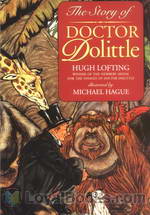 The Story of Doctor Dolittle
The Story of Doctor Dolittle
An adventurous children’s novel, The Story of Doctor Dolittle is the first book in the Doctor Dolittle series. The novel depicts the many adventures of Dr. John Dolittle as he learns the language of animals and takes on various feats including exotic travel, a dangerous encounter with pirates, and a mission to set right from wrong. The novel begins with the introduction of Dr. John Dolittle, an animal lover and respected physician, who lives in the small English town of Puddleby-on-the-Marsh with his unmarried sister... | |
 Doctor Dolittle's Post Office (version 2) (dramatic reading)
Doctor Dolittle's Post Office (version 2) (dramatic reading)
While working in Africa, the eminent naturalist John Dolittle sets out to create the best post office on earth, using his bird friends to carry messages and packages anywhere in the world in record time. Along the way, he also manages to foil a slave trader, enrich a kingdom, save a ship, and meet the oldest living creature on earth! - Summary by Devorah Allen Cast: Doctor Dolittle: ToddHWSpeedy the Swallow: TJ BurnsDab-Dab the Duck: Leanne YauJip the Dog: Rafe BallGub-Gub the Pig: Campbell SchelpThe... | |
By: Hyakuzō Kurata (1891-1943) | |
|---|---|
 Priest and His Disciples (Shaw Translation)
Priest and His Disciples (Shaw Translation)
At the age of twenty-six (at the height of the Great War in Europe), the religious pilgrim and maverick Kurata Hyakuzō wrote a profoundly philosophical play called "The Priest & His Disciples" ("Shukke to sono deshi"). This stage play is based on the life and teachings of the 13th century Buddhist priest Shinran (1173-1263) and quickly became immensely popular. Shinran, the historical founder of the True Pure Land School of Buddhism (Jōdo Shinshū), encounters the poor family of Hino Saemon and his wife Okane, and converses with them about how to live in circumstances of change and turmoil and hardship... | |
By: J. M. Barrie (1860-1937) | |
|---|---|
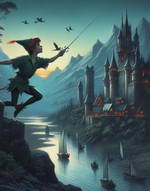 Peter Pan
Peter Pan
His name has become a metaphor for one who will never grow old. Peter Pan by JM Barrie is the story of a boy who remains a boy while the world around him changes. Sir James Mathew Barrie was a Scottish playwright and novelist whose works were received with great critical and commercial success in the late nineteenth and early twentieth century. He discovered the main inspiration for his creative genius in his friendship (and later guardianship) with the children of Arthur and Sylvia Llewellyn-Davies... | |
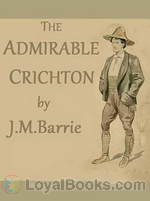 The Admirable Crichton
The Admirable Crichton
From the author of Peter Pan:Lord Loam, a British peer, considers class divisions to be artificial. He promotes his views during tea-parties where servants mingle with his aristocratic guests, to the embarrassment of all. Crichton, his butler, particularly disapproves of this.Loam, his family, a maid, and Crichton are shipwrecked on a deserted tropical island. The resourceful Crichton is the only one of the party with any practical knowledge. Eventually, social roles are reversed, and Crichton becomes the governor. | |
 Dear Brutus
Dear Brutus
At a house in the country 8 guests are invited to enter a magical wood to see what might have happened had they made a different choice in life. Even though they are warned away from the wood, they take a chance and enter. The title comes from Shakespeare: "The fault lies in our selves, dear Brutus, not in our stars...," and summarizes the theme of this play: given a second chance, will people still make the same mistakes? | |
By: James Elroy Flecker (1884-1915) | |
|---|---|
 King of Alsander (Dramatic Reading)
King of Alsander (Dramatic Reading)
First published in 1914, the King of Alsander is the only novel by James Elroy Flecker, best known as a poet, but also a noted scholar, linguist and diplomat. Flecker's love of learning, language and travel, and his keen satirical insight into politics are all in evidence in this phantasmagoric tale. As the author himself describes it: Here is a tale all romance - a tale such as only a Poet can write for you, O appreciative and generous Public - a tale of madmen, kings, scholars, grocers, consuls,... | |
By: James Joyce (1882-1941) | |
|---|---|
 Exiles
Exiles
Exiles is a play by James Joyce, who is principally remembered for his novels. It was rejected by W. B. Yeats for production by the Abbey Theatre. Its first major London performance was in 1970, when Harold Pinter directed it at the Mermaid Theatre. The basic premise of Exiles involves a love triangle between Richard Rowan (a Dublin writer recently returned from exile in Rome), Bertha (his common law wife) and his old friend Robert Hand (a journalist). (There are obvious parallels to be drawn with... | |
By: James Planché (1796-1880) | |
|---|---|
 Vampire; or, The Bride of the Isles
Vampire; or, The Bride of the Isles
Freely adapted from Lord Byron’s Fragment of a Novel, J.R. Planché’s The Vampire; or, the Bride of the Isles predates Dracula in its depiction of the vampire as a seductive, sophisticated, and noble figure. It also helped popularize the character of Lord Ruthven, a nefarious “creature of the night” who would later be immortalized in numerous films, operas, roleplaying games, novels and comic books. Set in the Scottish Isles, Planché’s play begins with our heroine having a prophetic vision of her own demise... | |
By: Jane Austen (1775-1817) | |
|---|---|
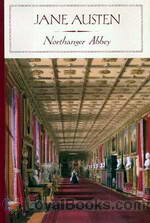 Northanger Abbey
Northanger Abbey
Jane Austen’s Northanger Abbey is a book about the life of Catherine Morland and her romantic relationships. The novel is divided into two parts; the first part begins with Catherine’s visit to Bath and her relationship with Henry Tilney and the other people she met there, and the second part starts with the arrival of Frederick Tilney and her visit to Northanger Abbey. This book alongside Pride and Prejudice and Sense and Sensibility is considered one of the major works of Jane Austen. The novel had undergone many revisions before its publication and it was even originally titled “Catherine... | |
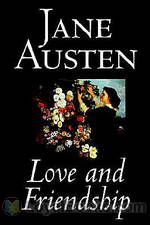 Love and Friendship
Love and Friendship
Begun when she was just eleven years old, Love and Friendship is one of Jane Austen's stories that very few readers may have encountered before. Austen experts feel that this story was written, like many others, only for the pleasure of her family and friends. It is scribbled across three notebooks, in childish handwriting, and the complete work is thought to have been written over a period of six or seven years. It is dedicated to one of her cousins, whom she was very close to, Eliza de Feuillide... | |
By: Jane D. Abbott (1881-1968) | |
|---|---|
 Highacres (Dramatic Reading)
Highacres (Dramatic Reading)
The story of a young mountain girl and her first year of city living and going to a high school. She knows nothing of town life, but she had dreams and longs to learn more and discover what the world is like outside of her mountain home. Go with her to the Westley's home, where she finds everyone kind, except the Wesley's oldest daughter, Isobel, who is proud and snubs her. With determination, and courage she enjoys her first year, and longs to continue at Highacres. | |
By: Jean Racine (1639-1699) | |
|---|---|
 Alexander the Great
Alexander the Great
Racine caused furour in the French theater community with his second play, Alexander the Great, when "The sensitive poet seems to have been disgusted by the manner in which it was being acted; for, a fortnight after it had been put on the boards at the Palais Royal [by Moliere], Moliere's company learned with astonishment and indignation that it was being simultaneously performed at a rival theatre." "The story of this drama is derived from Quintus Curtius, Plutarch, and Justin." Racine followed the rules of classical French dramatists: one main plot, action takes place in one day and at one location... | |
By: Jesse Lynch Williams (1871-1929) | |
|---|---|
 Why Marry?
Why Marry?
Why Marry? is a comedy, which "tells the truth about marriage". We find a family in the throes of proving the morality of marriage to a New Age Woman. Can the family defend marriage to this self-supporting girl? Will she be convinced that marriage is the ultimate sacredness of a relationship or will she hold to her perception that marriage is the basis of separating two lovers."Why Marry?" won the first Pulitzer Prize for Drama. | |